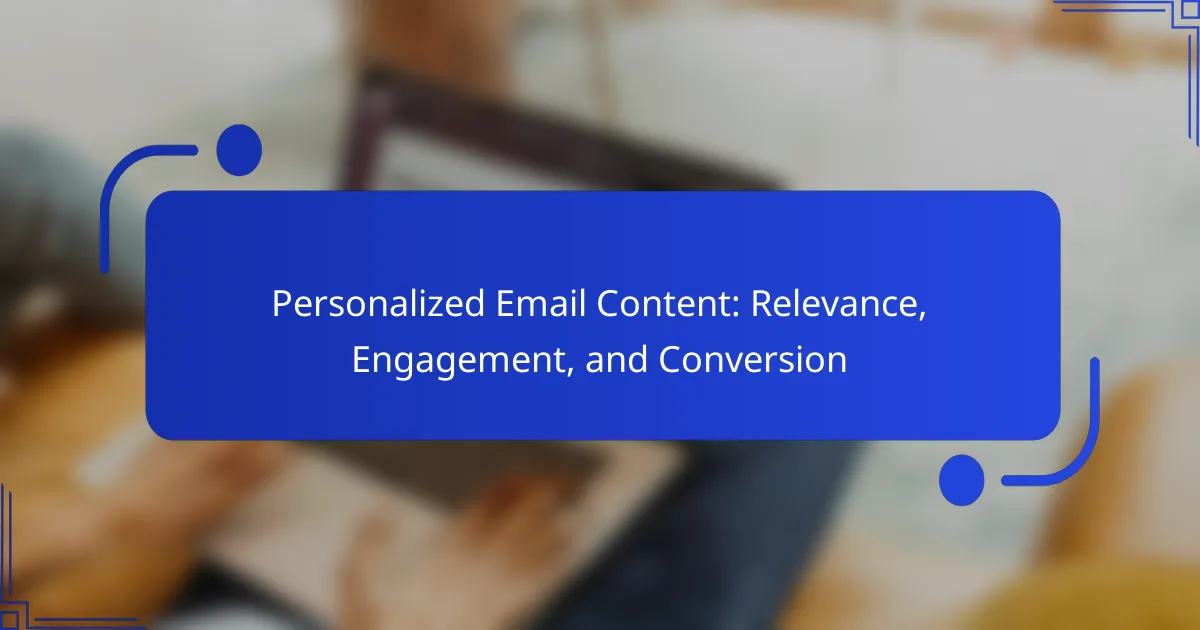Personalized email content plays a crucial role in enhancing engagement by aligning messages with individual preferences and behaviors. By employing strategies such as audience segmentation and dynamic content insertion, marketers can create more relevant communications that not only capture attention but also drive conversions.
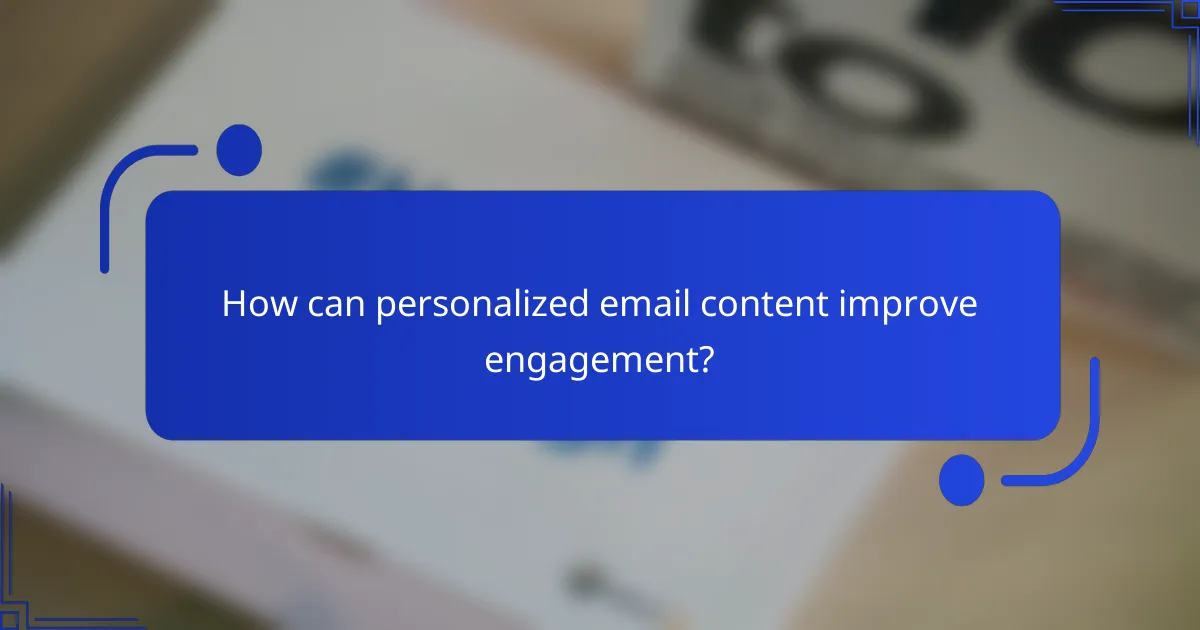
How can personalized email content improve engagement?
Personalized email content significantly enhances engagement by tailoring messages to individual preferences and behaviors. This approach leads to more relevant communication, which can capture recipients’ attention and encourage interaction.
Increased open rates
Personalized emails tend to have higher open rates compared to generic messages. When recipients see their name or relevant content in the subject line, they are more likely to open the email. For instance, using a subject line that includes the recipient’s name can boost open rates by a notable percentage.
To maximize open rates, consider segmenting your email list based on demographics or past interactions. This allows you to craft targeted messages that resonate with specific groups, increasing the likelihood of engagement.
Higher click-through rates
Emails with personalized content often achieve higher click-through rates, as they provide relevant information that encourages action. By including tailored product recommendations or content based on previous purchases, you can motivate recipients to click through to your website.
Using clear calls to action (CTAs) that reflect the recipient’s interests can further enhance click-through rates. For example, a CTA that says “Explore your personalized offers” can be more effective than a generic “Shop now.”
Enhanced customer loyalty
Personalization fosters a stronger connection between brands and customers, leading to enhanced loyalty. When customers feel understood and valued through tailored communications, they are more likely to remain engaged with the brand over time.
To build loyalty, consistently deliver personalized content that aligns with customer preferences and behaviors. This could include exclusive offers or personalized follow-ups after a purchase, reinforcing the relationship and encouraging repeat business.
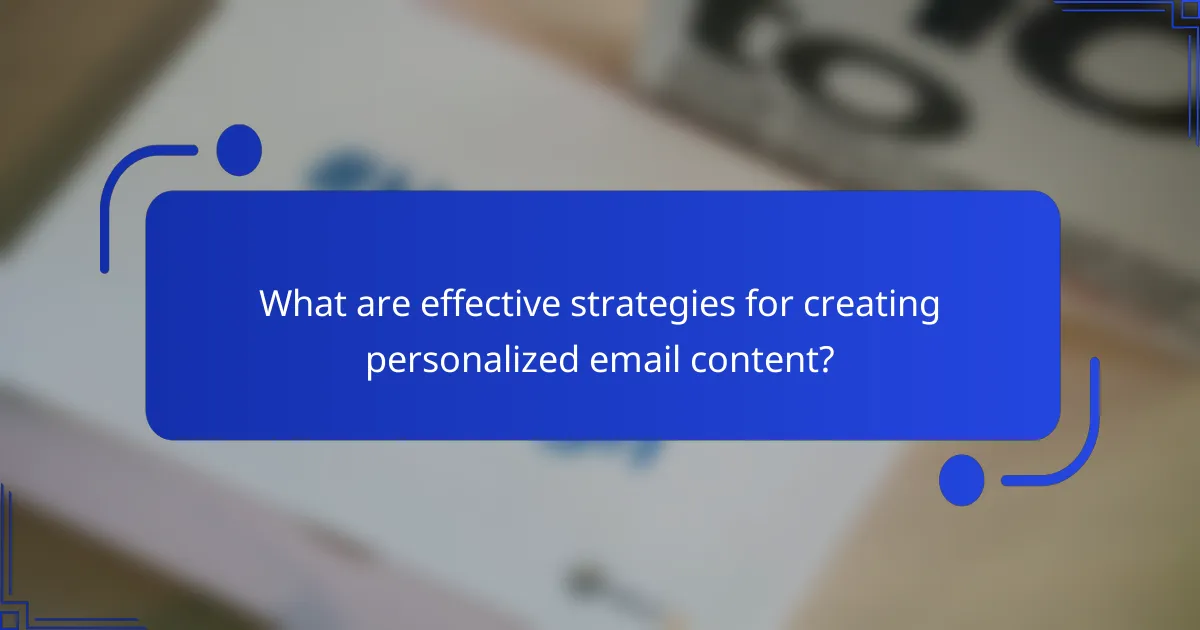
What are effective strategies for creating personalized email content?
Effective strategies for creating personalized email content include segmenting email lists, using dynamic content insertion, and implementing behavioral triggers. These approaches enhance relevance, boost engagement, and ultimately drive conversions by tailoring messages to individual preferences and behaviors.
Segmentation of email lists
Segmentation involves dividing your email list into smaller groups based on specific criteria such as demographics, purchase history, or engagement levels. This allows you to send targeted messages that resonate more with each segment, increasing the likelihood of engagement.
For example, you might create segments for new customers, repeat buyers, and inactive subscribers. Each group can receive tailored content that speaks directly to their needs and interests, leading to higher open and click-through rates.
Dynamic content insertion
Dynamic content insertion allows you to customize parts of your email based on the recipient’s data, such as their name, location, or past purchases. This personalization can make your emails feel more relevant and engaging, encouraging recipients to take action.
For instance, you could include product recommendations based on previous purchases or local events relevant to the recipient’s area. This approach not only enhances user experience but can also significantly improve conversion rates.
Behavioral triggers
Behavioral triggers are automated emails sent based on specific actions taken by the recipient, such as abandoning a shopping cart or browsing a product page. These timely messages can effectively re-engage users and guide them back to your site.
For example, if a customer leaves items in their cart, a follow-up email reminding them of their abandoned cart can prompt them to complete their purchase. Implementing such triggers can lead to increased sales and improved customer retention.
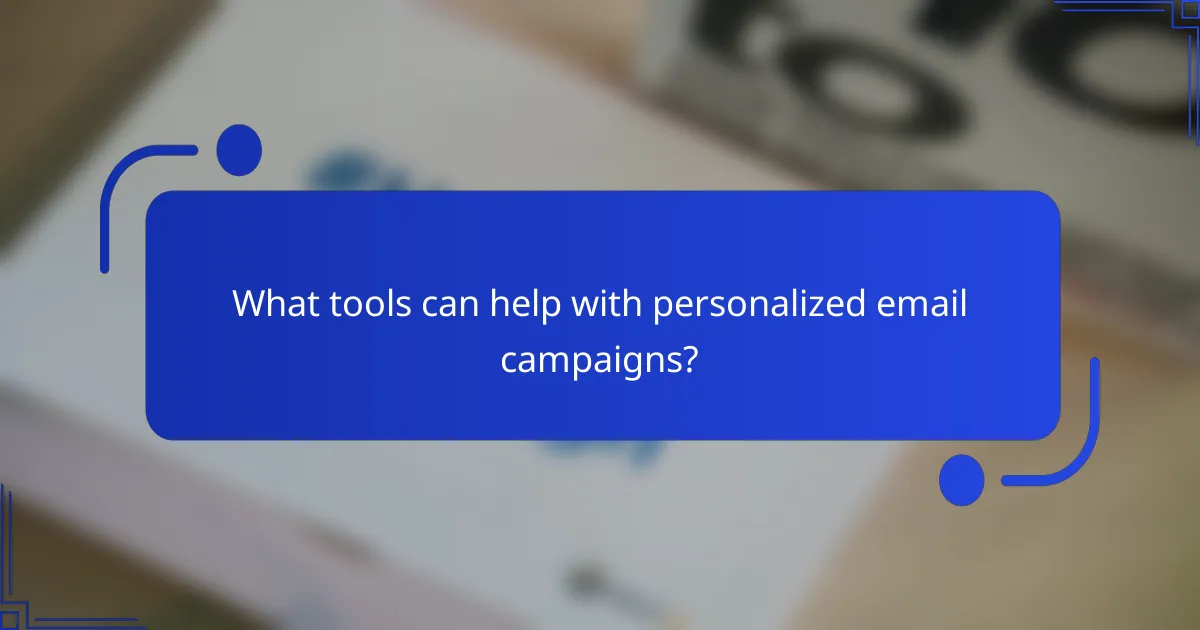
What tools can help with personalized email campaigns?
Several tools can enhance personalized email campaigns by allowing marketers to segment their audience and tailor content effectively. These platforms provide features such as automation, analytics, and customizable templates to improve engagement and conversion rates.
Mailchimp
Mailchimp is a popular email marketing platform known for its user-friendly interface and robust automation features. It allows users to create targeted campaigns based on customer behavior and preferences, making it easier to send relevant content to specific segments.
With Mailchimp, you can utilize A/B testing to determine which subject lines or content resonate best with your audience. Additionally, its analytics tools help track engagement metrics, enabling continuous optimization of your campaigns.
HubSpot
HubSpot offers a comprehensive marketing platform that integrates email marketing with CRM capabilities. This integration allows for deep personalization based on customer interactions and data collected across various touchpoints.
HubSpot’s email tool includes features like smart content, which adjusts the email message based on the recipient’s profile. This ensures that each email feels tailored, increasing the likelihood of engagement and conversions.
ActiveCampaign
ActiveCampaign is known for its advanced automation capabilities and customer experience focus. It provides tools for creating highly personalized email sequences based on user behavior, preferences, and lifecycle stages.
With features like predictive sending and dynamic content, ActiveCampaign helps marketers deliver the right message at the right time. This can significantly enhance user engagement and drive higher conversion rates, making it a strong choice for businesses looking to improve their email marketing efforts.
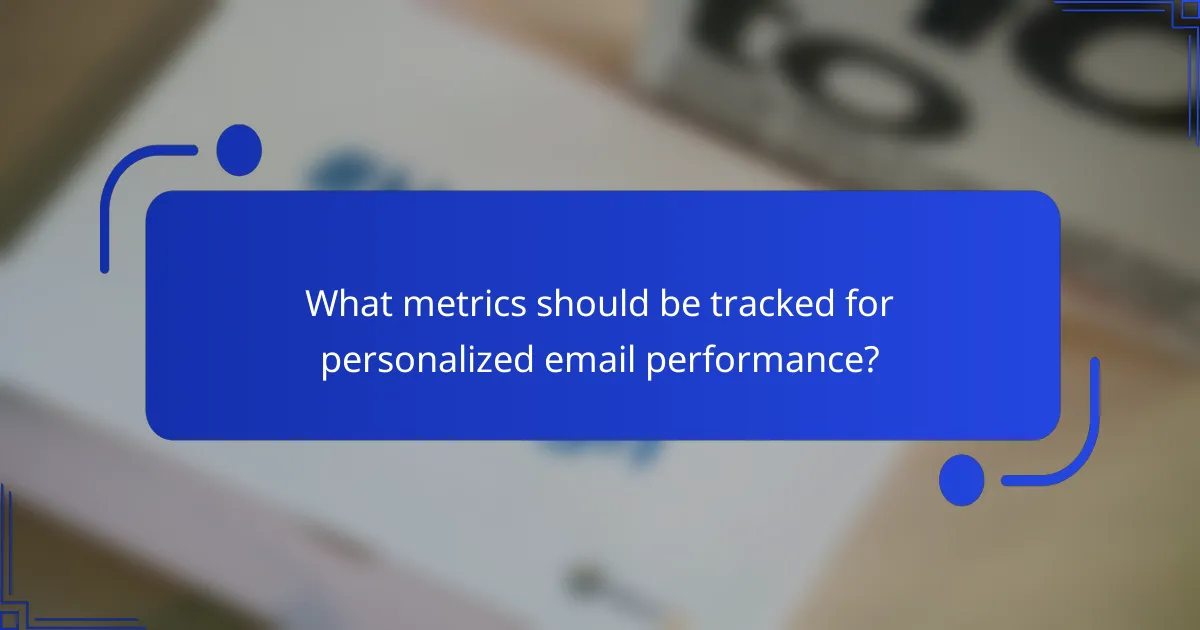
What metrics should be tracked for personalized email performance?
To evaluate personalized email performance, focus on key metrics such as open rates, conversion rates, and unsubscribe rates. These indicators provide insights into how well your emails resonate with recipients and their effectiveness in driving desired actions.
Open rates
Open rates measure the percentage of recipients who open your email compared to the total number delivered. A typical open rate for marketing emails ranges from 15% to 25%, but this can vary based on industry and audience engagement. High open rates often indicate effective subject lines and targeted lists.
To improve open rates, consider A/B testing different subject lines and sending times. Personalization in the subject line can also enhance engagement, making it more likely that recipients will open your email.
Conversion rates
Conversion rates reflect the percentage of recipients who complete a desired action after opening your email, such as making a purchase or signing up for a webinar. A good conversion rate typically falls between 1% and 5%, depending on the industry and the specific offer presented. Tracking this metric helps you assess the effectiveness of your email content and calls to action.
To boost conversion rates, ensure that your email content aligns with the recipient’s interests and needs. Clear and compelling calls to action, along with relevant offers, can significantly enhance the likelihood of conversions.
Unsubscribe rates
Unsubscribe rates indicate the percentage of recipients who opt out of your email list after receiving a campaign. A typical unsubscribe rate is around 0.2% to 0.5%, but higher rates may signal issues with content relevance or frequency. Monitoring this metric helps you understand audience satisfaction and retention.
To minimize unsubscribe rates, regularly evaluate your email content and frequency. Providing options for recipients to adjust their preferences rather than opting out entirely can help maintain engagement and reduce churn.
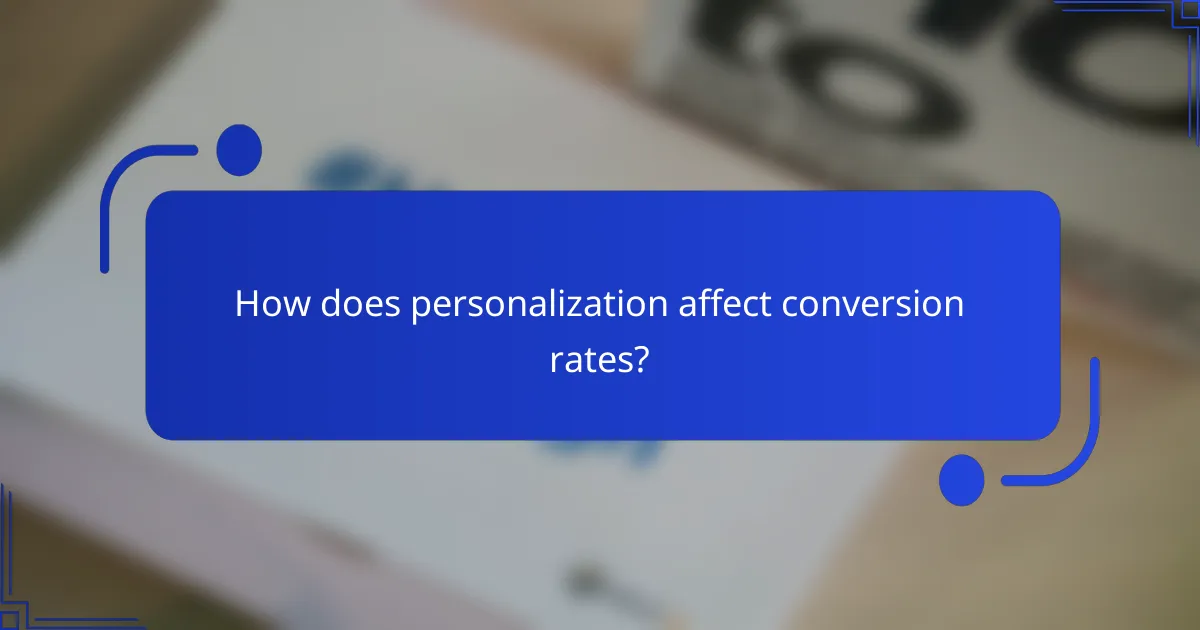
How does personalization affect conversion rates?
Personalization significantly boosts conversion rates by tailoring content to individual preferences and behaviors. When customers receive relevant messages, they are more likely to engage and complete purchases.
Increases sales
Personalized email content can lead to higher sales figures by directly addressing the interests of potential buyers. For instance, sending targeted promotions based on previous purchases or browsing history can encourage customers to buy products they are more likely to want.
Studies indicate that personalized emails can achieve open rates and click-through rates that are considerably higher than generic messages. This increased engagement often translates into more completed transactions.
Reduces cart abandonment
Personalization helps reduce cart abandonment by reminding customers of items they showed interest in. Sending follow-up emails with personalized recommendations or incentives, such as discounts, can prompt customers to return and finalize their purchases.
For example, including a customer’s name and the specific items left in their cart can create a sense of urgency and relevance, encouraging them to complete the transaction.
Boosts average order value
By using personalized recommendations, businesses can increase the average order value. Suggesting complementary products based on a customer’s past purchases can entice them to add more items to their cart.
For instance, if a customer buys a camera, recommending lenses or accessories in follow-up emails can lead to additional sales. This strategy not only enhances the shopping experience but also maximizes revenue per transaction.

What are the challenges of implementing personalized email content?
Implementing personalized email content presents several challenges, including data privacy concerns, resource allocation, and maintaining content relevance. These obstacles can hinder the effectiveness of email campaigns and impact customer trust.
Data privacy concerns
Data privacy concerns are a significant challenge when implementing personalized email content. With regulations like GDPR in Europe and CCPA in California, businesses must ensure they collect, store, and use customer data responsibly and transparently.
To navigate these concerns, companies should prioritize obtaining explicit consent from users before collecting their data. Additionally, they should provide clear information on how the data will be used and allow users to opt-out easily.
Failing to address data privacy can lead to legal repercussions and damage to brand reputation. Regular audits of data practices and compliance with local regulations are essential steps to mitigate risks.
